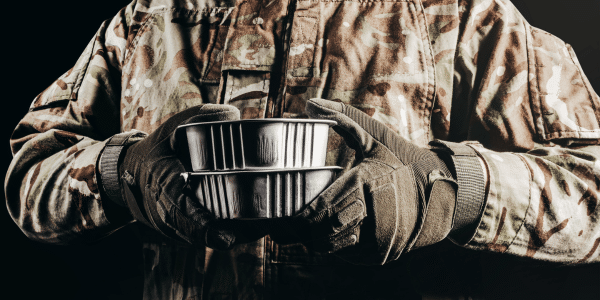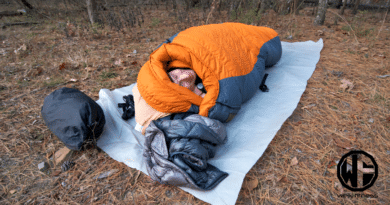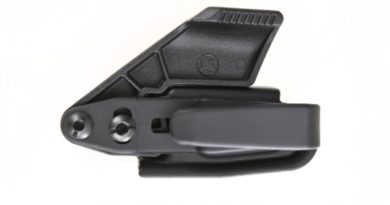Meals Ready-to-Eat (MREs): The Benefits and Use of the MRE
Emergencies strike when we least expect them, tossing our lives into chaos and challenging our ability to survive. Whether it’s a natural disaster, a power outage, or being stranded in the wilderness, having access to a safe and reliable food supply like an MRE meal is vital.
It’s no wonder that for those who like to be prepared—the preppers and survivalists among us—finding the right sustenance can seem daunting.
What if there was a simple solution hiding in plain sight? Enter MREs: Meals-Ready-to-Eat. These are not just any meals, they’re the rugged dining companions of soldiers worldwide.
With an impressive shelf life that defies time itself, MREs stand ready at your service. This article will peel back the layers of these lifesaving packets, guiding you through their benefits and how best to use them in a pinch.
Keep reading as we unravel the world of MREs—a true cornerstone of emergency preparedness—and discover why they might just be the unsung heroes you need in your emergency kit. Ready to learn more? Let’s dig in!
Key Takeaways
- MREs, which stand for Meals Ready to Eat, are self-contained ration packs initially designed for military personnel but now widely used in emergency preparedness due to their convenience and shelf stability.
- Each MRE pack contains an entree, side dish, dessert, snacks, a drink mix, utensils with an accessory packet, and often a flameless ration heater; they deliver about 1,250 calories per meal to sustain energy levels.
- The pre-packaged meals have an extended shelf life that can last for years if stored properly; the pack’s date codes indicate when they were sealed to help monitor freshness.
- While convenient for emergencies and outdoor activities like camping or hunting due to no cooking requirement, criticisms of MREs include limited taste variety and potential health risks from high sodium content.
- Alternative emergency food options exist alongside MREs, including canned goods and freeze-dried/dehydrated foods.
Table of contents
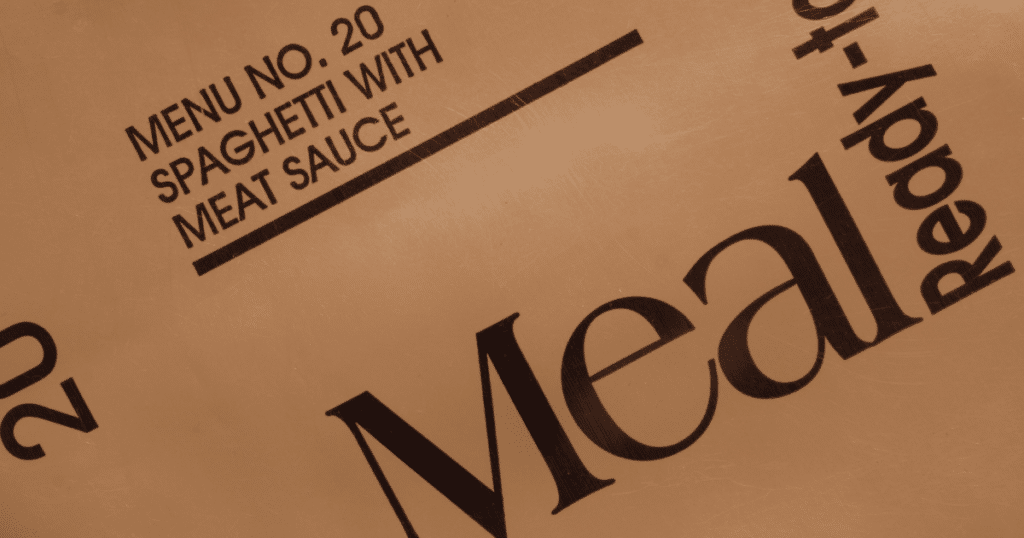
What are MREs?
MREs, or Meals Ready to Eat, are self-contained ration packs developed for use by military personnel in the field. They contain a variety of food items and accessories, including an entree, crackers, a side dish, a dessert, and a drink mix.
Related Article: The 3-Day Military Diet — Did I Make It Out Alive?
MREs are designed to be shelf-stable and require no preparation before consumption.
History and development of the MRE
The concept of a self-contained, robust meal for soldiers in the field evolved into what we know today as ready-to-eat meals (MREs). They first emerged in the 1980s to replace earlier rations like the Meal, Combat, Individual (MCI) and the Long Range Patrol ration (LRP), which servicemen found cumbersome and less palatable.
These initial MRE meals aimed to provide a balanced diet with enough calories to sustain active military personnel.
Innovation has driven enhancements in MRE menus and packaging over time, leading to lighter weight pouches that withstand harsh conditions. Technological advancements have introduced flameless ration heaters, allowing for hot meals without fire.
This progression has made MREs not only vital for military use but also indispensable assets for preppers and survivalists seeking reliable food sources in emergencies or outdoor adventures.
Contents and requirements
Packing the right MRE means you’re always ready, whether for a sudden disaster or a planned outdoor adventure. Let’s dig into what each MRE includes to meet your survival needs.
- Each MRE comes as a totally self-contained operational ration. This means it packs everything you need for a full meal in one flexible bag.
- Main entrée options vary widely, from beef stroganoff to chicken fajita or vegetarian pasta. You’ll find genuine military and commercial versions like Military MRE and MRE Star with assorted flavors.
- Side dishes complement the main course, often including rice, vegetables, or fruit. Choices like mashed potatoes or applesauce add variety to meals.
- Dessert could be anything from a sweet pound cake to chocolate pudding. These tasty treats provide a morale boost along with calories.
- Snacks such as nut mixes or dried fruit offer quick energy boosts and snacking satisfaction between meals.
- An accessory packet typically contains seasoning, utensils, condiments, and sometimes coffee or tea to enhance the meal experience.
- Flameless ration heaters are included in many kits. These water-activated devices allow you to heat your meal without an external heat source.
- Beverages range from powdered drink mixes to coffee. Just add water for a hydration option that can include electrolytes or caffeine.
- Full nutrition is key, with every MRE designed to deliver around 1250 calories per meal. They provide balanced macronutrients vital for sustained energy levels.
- Shelf stability ensures that MREs stay safe and edible for years under certain storage conditions—essential for long-term emergency plans.
Resale status and date codes
Understanding the resale status of MREs is crucial for anyone looking to buy them outside of official military channels. These meals often find their way into civilian hands through military surplus stores or online platforms such as Amazon.com.
It’s important to check if the MREs are genuine U.S. military rations, as there are many commercial versions available that might not meet the same standards. Make sure you’re getting a true Meal, Ready-to-Eat, by verifying its authenticity.
Date codes on MRE packages tell you when they were packed and give an indication of their shelf life. Each package is marked with a four-digit code representing the year and day it was sealed—for example, “7345” would be the 345th day of 2017.
Shelf stable, these meals can last for years depending on storage conditions but always read labels closely because freshness impacts the taste and nutritional value. Checking date codes ensures you get your report on food quality before investing in your emergency supply or planning your next camping trip with reliable, ready-to-eat meals at hand.
Uses and Benefits of MREs
MREs are not just for emergency preparedness; they are also a convenient option for outdoor activities like hunting and camping. With their long shelf stability and nutritional value, MREs provide a complete meal that requires no preparation, making them ideal for various situations.
1. Emergency preparedness
When it comes to emergency preparedness, having a reliable and convenient food source can make all the difference during times of need. Incorporating MREs into your emergency preparedness plans can provide an essential solution.
Related Article: Are You Prepared for a Disaster with an Emergency Food Supply?
With their long shelf life, little to no preparation required, and self-contained operational rations, MREs offer a practical way to ensure that you have access to nourishing meals when other options may not be available.

As a prepper or survivalist, being prepared with MREs can help reduce fear and anxiety during disasters. These ready-to-eat meals are lightweight and take up minimal space, making them an ideal choice for emergency supply kits.
2. Outdoor activities (hunting, camping, etc.)
MREs are an essential addition to your outdoor activity gear, whether you’re hunting or camping. Their lightweight and compact design makes them easy to carry, and their long shelf life means they will be ready when needed.
With MREs, there’s no need for cooking equipment or refrigeration, making them a convenient choice for outdoor adventures.
In the event of an emergency while engaging in outdoor activities, having MREs on hand provides peace of mind, knowing that you have a reliable food source readily available. Additionally, the nutritional value of MREs ensures that you stay energized during your outdoor pursuits.
3. Convenience and shelf stability
MREs provide a high level of convenience as they are pre-packaged and require little to no preparation before consumption. With their long shelf life, MREs offer a reliable and practical solution for emergency preparedness.
Their lightweight nature and compact size make them easy to store, ensuring that you have access to essential nutrition during challenging times. Additionally, the self-contained operational rations in MREs allow for quick deployment and consumption without the need for additional cooking equipment. You get a flameless heater to warm up your meals in the field and on the go.
The shelf stability of MREs means that they can be stored for extended periods without compromising their nutritional value or safety. This feature makes them an excellent option for stocking up on emergency food supplies, providing peace of mind knowing that you have a dependable source of sustenance readily available when needed most.
4. Nutritional value
MREs provide essential nutritional value, offering a well-balanced mix of protein, carbohydrates, and fats. These meals typically contain around 1,200-1,300 calories to sustain energy levels during emergencies or outdoor activities.
They also include vital nutrients like fiber and vitamins C and D to support overall health. Plus, MREs are designed with a long shelf life without compromising their nutritional integrity, making them an ideal option for emergency preparedness plans.
For individuals focused on maintaining a nutritionally balanced diet in challenging situations, MREs can serve as reliable sources of sustenance due to their carefully curated assortment of nutrients.
Your entree may also come with instant coffee to help keep you energized, along with the calories you’ll get from the MRE food. Some MREs come with a fruit flavored drink instead of the coffee.
Criticisms and Alternatives to Meals Ready-to-Eat
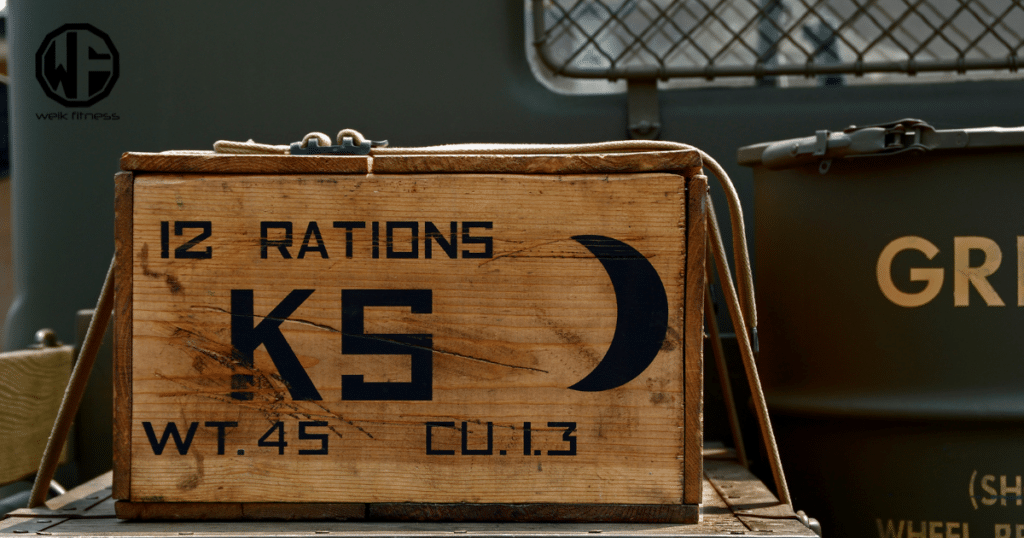
Some criticisms of MREs include their lack of variety and taste with the entire meal or main entree, as well as potential health risks due to high sodium content. However, there are alternative emergency food options available that may suit different preferences and dietary needs.
1. Lack of variety and taste in military MREs
MREs have faced criticism for their limited flavor options and lack of variety. Many would not say that consuming MRE entrees is a tasty meal. However, it gets the job done. The repetitive taste can be disheartening during long-term use, especially in emergency situations where comfort and morale are paramount.
Moreover, the restricted selection fails to cater to diverse dietary preferences or restrictions, making it challenging for individuals with specific nutritional requirements to rely solely on MREs.
This limitation underscores the importance of seeking alternative food options that provide a wider range of flavors and choices while ensuring essential nutritional value.
2. Potential health risks of consuming an MRE
Consuming MREs may pose potential health risks due to their high sodium content and preservative additives. The elevated levels of salt in MREs can lead to dehydration, high blood pressure, and other cardiovascular issues if consumed regularly over an extended period.
Additionally, some individuals may experience gastrointestinal discomfort or bloating as a result of the specific ingredients and processing methods used in MRE production.

High sodium content in MREs has been linked to various health concerns, including increased risk of stroke, heart disease, and kidney damage. Excessive consumption of these ready-to-eat meals could also contribute to water retention and aggravate existing health conditions in certain individuals.
3. Other emergency food options
When considering emergency food options besides MREs, preppers, and survivalists may also want to explore other viable choices that can provide sustenance during crises. Here are several alternative emergency food options to consider:
· Canned goods: Non-perishable canned foods such as vegetables, fruits, soups, and meats can be an essential part of emergency food supplies due to their long shelf life and convenience.
· Freeze-dried or dehydrated foods: These lightweight, compact options retain most of the original nutrients and flavor and can be easily stored for extended periods, making them suitable for emergencies.
· Shelf-stable snacks: Items like granola bars, nuts, dried fruits, and crackers are convenient to store and offer quick energy boosts in emergencies.
· Bulk grains and legumes: Stocking up on rice, beans, lentils, and oats provides a sustainable source of nutrition that is both cost-effective and versatile in meal preparation.
· Emergency meal kits: These kits often contain a variety of dehydrated meals along with essential supplies such as water purification tablets or cooking fuel, offering a comprehensive solution for sustained survival.
· Home-canned foods: Preserving fruits, vegetables, and meats through home-canning can yield nutritious additions to emergency provisions when done with proper safety measures.
· Ready-to-eat snacks: Items like peanut butter packets, trail mix, beef jerky, and energy bars offer quick nourishment without the need for cooking or preparation.
Military MRE Rations and Ready to Eat Options
To wrap this up, MREs and ready to eat meals offer a practical and efficient solution for emergency preparedness. The long shelf life and minimal preparation requirements make them a reliable choice in times of need.
Have you considered incorporating MREs into your emergency plans? Emphasizing their importance can lead to significant improvements in preparedness. Explore further resources or guidance to enhance your knowledge on this vital subject.
Reflect deeply on the benefits of MREs and take action to ensure you are adequately prepared for any eventuality.
Here are some options for you to consider picking up and having on hand (or storing):
As a side note to close out this article, if you want to support our website and are in need of any tactical gear (or any product for that matter), anything you purchase using our links below will provide us with a small commission. We don’t charge for our free content and our goal is to keep it that way. We don’t have a Patreon account to put things behind a paywall, nor do we sell pics of our feet on OnlyFans.
If you choose to use the links below and make a purchase (at no additional cost to you), we greatly appreciate your support as it helps us continue to publish free content (like this article) on our website:
- Optics Planet (use code SAS5 at checkout for 5% off)
- Amazon
We have also partnered with CCW Safe. It’s the concealed carry coverage that I personally have for myself and my family in the event we need to defend our lives. Feel free to use our CCW Safe link to sign up and get some coverage to protect yourself and your family.
Also if you have a product you would like us to check out and potentially review, please contact us and let’s discuss.
FAQs
MRE stands for Meal, Ready-to-Eat. They’re pre-made meals that the United States government supplies to soldiers and now also provides for emergency situations. These ready-to-eat meals are perfect when you don’t have access to a kitchen.
Originally designed for military personnel, MREs have become available to the public. You can find them online under categories like “Meal, Ready-to-Eat” on Amazon or other retailers offering camping and survival gear.
Many modern MRE packages include a flameless ration heater, allowing you to enjoy a hot meal without needing fire or electricity—just add water!
Yes! Inside an MRE pack, you’ll find various tasty entrees such as beef goulash, cheese tortellini, or bean burrito—there are plenty of options to keep your meals interesting.
One full Meal-Ready-to-Eat typically contains a calorie count that can range from 1,200 to 1,300 kilocalories (kcal). This is enough energy balance to sustain an individual engaged in physical activity throughout the day.
Absolutely! Every item within the Meal-Ready-to-Eat pack can be consumed cold if heating isn’t possible—providing necessary nutrients regardless of circumstances.


*Disclosure: This article may contain affiliate links or ads, which means we earn a small commission at no extra cost to you if you make a purchase through these links. These commissions help support the operation and maintenance of our website, allowing us to continue producing free valuable content. Your support is genuinely appreciated, whether you choose to use our links or not. Thank you for being a part of our community and enjoying our content.
PLEASE CONSIDER SHARING THIS ON YOUR SOCIAL MEDIA TO HELP OTHERS LEARN MORE ABOUT THIS TOPIC.


